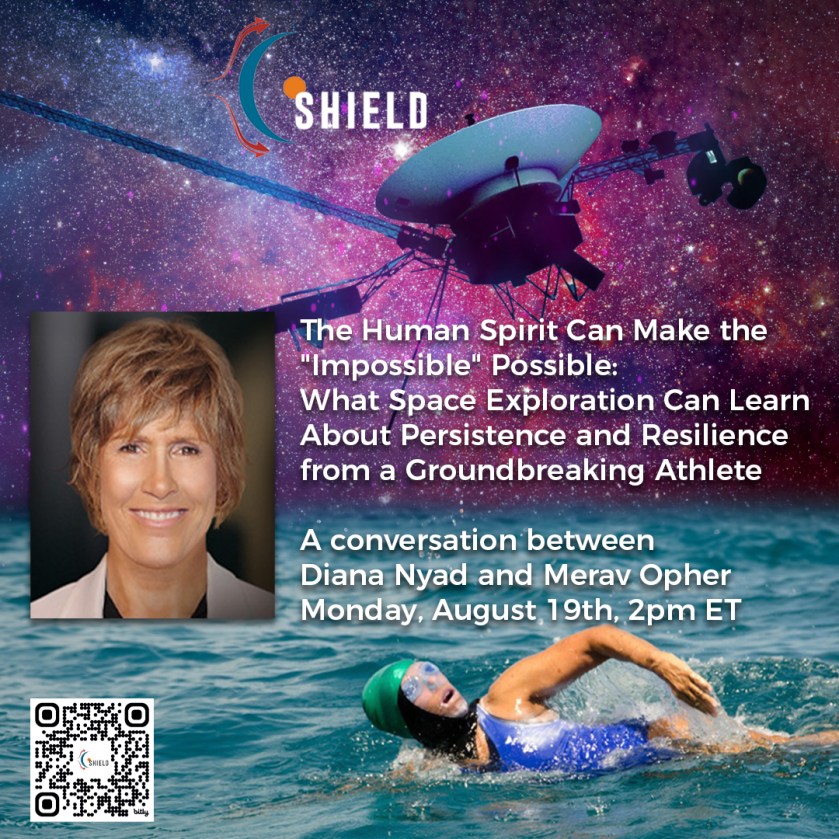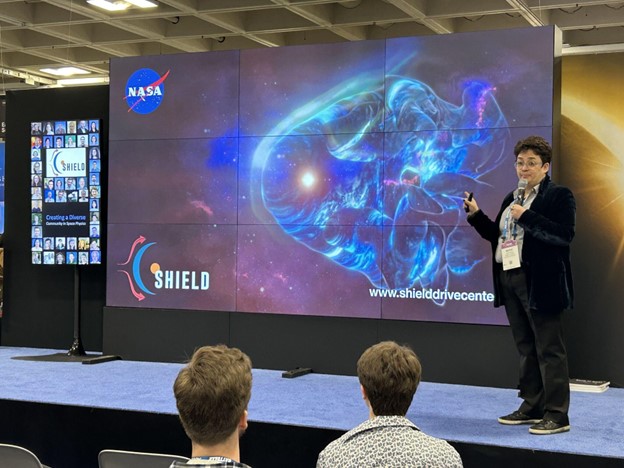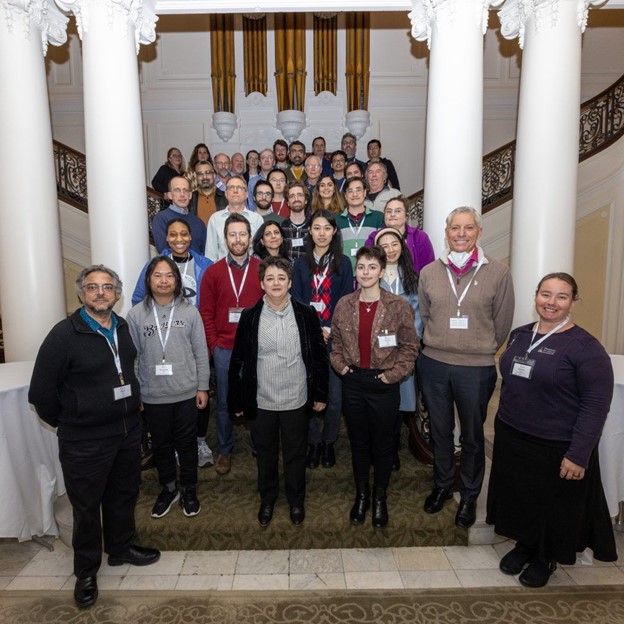NASA’s Solar wind with Hydrogen Ion charge Exchange and Large-Scale Dynamics (SHIELD) science center is hosting a webinar on Aug. 19, 2024, at 2 p.m. EDT. Anyone can tune in virtually and hear how space exploration can learn from the groundbreaking athlete Diana Nyad.

NASA is celebrating the Heliophysics Big Year, highlighting how the Sun touches everything (including physical and mental health). This webinar explores the mental fortitude and physical prowess it took for Nyad to swim the open ocean from Cuba to Key West, Florida, and the perseverance from physicist Merav Opher to start a multi-institutional Diversify, Realize, Integrate, Venture, Educate (DRIVE) science center that was awarded funding by NASA.
Nyad is a world-renowned marathon swimmer who swam around Manhattan Island in New York, swam from the Bahamas to Florida, and is the first and only person to swim the open ocean from Cuba to Key West in Florida. She is also a member of the International Women’s Sports Hall of Fame, an author, journalist, motivational speaker, commentator, and has appeared in several popular television shows.
Nyad’s passion, perseverance, and resilience have played key roles in her success when taking on some of the most difficult challenges in marathon swimming. She will speak with Merav Opher, leader of the SHIELD DRIVE Science Center, on how these traits can be translated to heliophysics, the study of the Sun and its influence on our solar system.
Opher is no stranger to these traits herself. Now a professor of astronomy at Boston University and a Harvard Radcliffe Fellow, when she first entered heliophysics in 1992, she was one of the few women in the field. When studying solar plasma physics in 1999 at the University of California, Los Angeles, she was the only woman in her department, while coming out as gay and adjusting to a new culture after moving from Sao Paulo, Brazil, requiring resilience and perseverance to continue in her studies. However, these challenges only increased her passion for heliophysics. She knocked down several barriers, eventually earning collaborations and mentorships from several renowned scientists in the field.
In 2014, Opher and her team at Boston University suggested a novel idea about our heliosphere, the bubble formed by solar wind surrounding our solar system that protects us from interstellar radiation. She and her team proposed that our heliosphere was croissant-shaped, contradicting the long-held belief that it was comet-shaped with a tail. This idea faced strong resistance from the scientific community.
“I had to follow my own path, my own thinking. I wanted to do creative, interesting science, and when the science told me something, I listened,” said Opher. “When deciding to propose this new heliospheric shape, I decided to strive for the impossible, to really push the boundaries.”

Rather than feeling defeated by the resistance from the science community, Opher pressed on. During this difficult time, she decided to establish a science center where collaboration and diversity were welcome and encouraged.
“This lack of diversity is really detrimental to the advance of science,” said Opher. She is working to change that.
With passion, perseverance, and resilience, Opher built a multi-institutional team composed of members who hold a range of strong opinions about the shape and science of our heliosphere. Eventually, the science center she established, SHIELD, was one of three centers awarded funding by NASA to tackle breakthrough science. The SHIELD DRIVE Science Center also works extensively in outreach to recruit future scientists from all backgrounds and affiliations.

Diana Nyad and Merav Opher share an indomitable sense of spirit, and through their trials, have developed a strong sense of self to aid them through the obstacles they face in each of their fields. Register to watch this webinar to hear how Diana Nyad’s experiences and perspectives can help when shaping our future science communities.
By Desiree Apodaca
NASA’s Goddard Space Flight Center, Greenbelt, Md.
